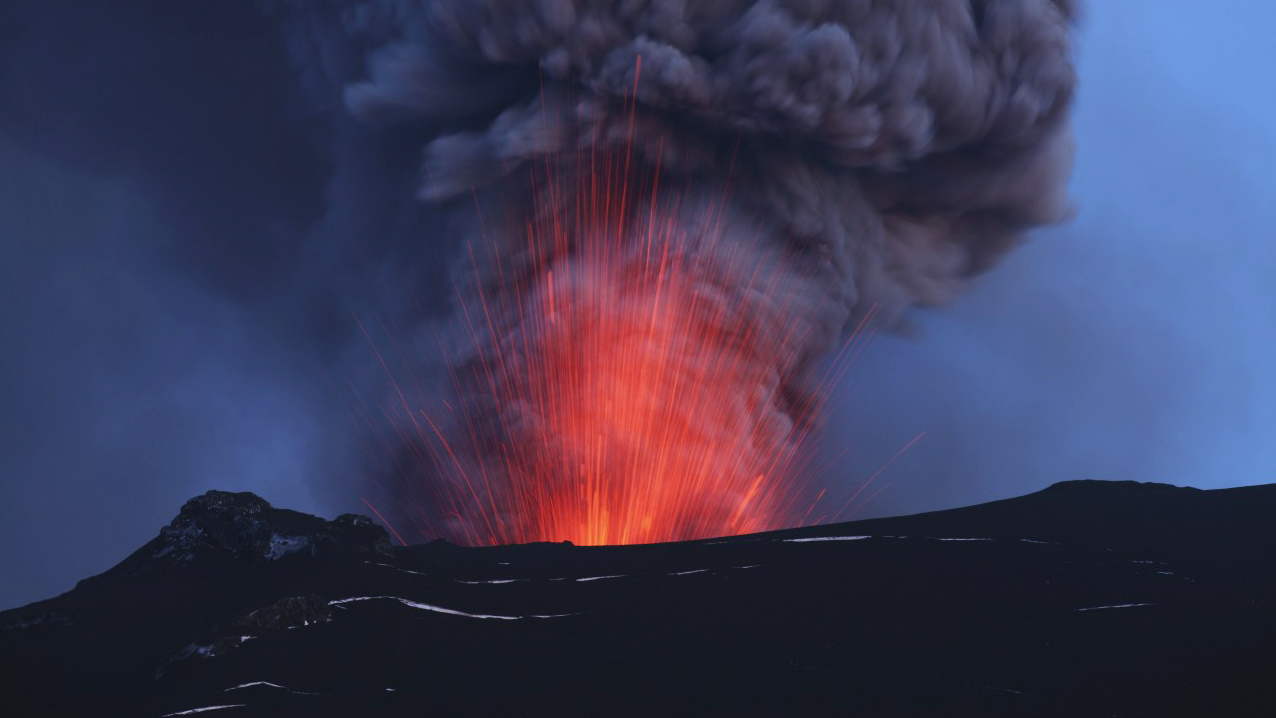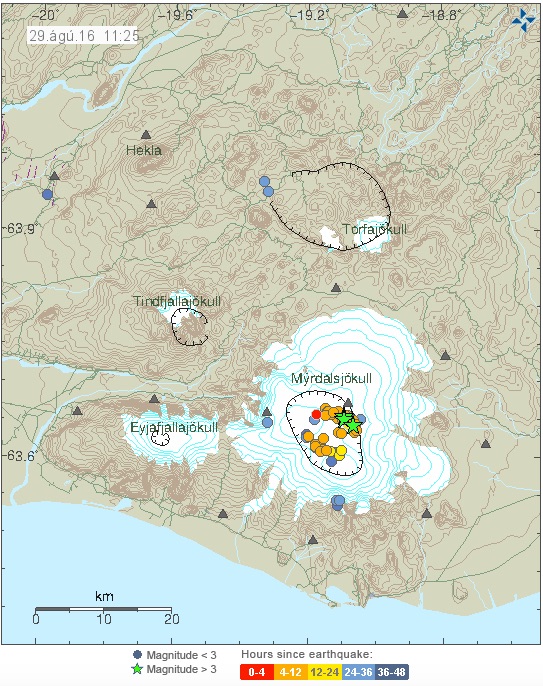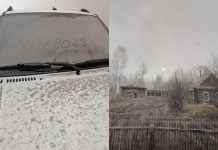On August 28, 2016, a brief but intense swarm of big earthquakes rattled the caldera at Katla, the largest volcano of Iceland. The strongest earthquakes were over M4.
These M4+ earthquakes are the largest temblors to occur to Katla since 1977. Is this series of strong earthquakes a sign of an imminent eruption?

Katla does have a history of large, explosive eruptions, which means it makes people nervous. Keeping an eye on any restlessness at the behemoth is vital for both the people of Iceland and for air travel across the North Atlantic.
A brief but intense earthquake swarm rattled the caldera at Katla in southern Iceland on August 28, 2016. The largest earthquakes were over M4, ranging from a few kilometers deep to near the surface. These M4+ earthquakes are the largest temblors to occur to Katla since 1977.

A sign of the next big eruption?
Although a few of the earthquakes were fairly large, the swarm seems to have petered out quickly as seismicity returned to background levels by Icelandic morning.
Moreover, the Icelandic Meteorological Office (IMO) has not changed the alert status for Katla from normal at this point.
But, the IMO has reported that flow in the Múlakvísl River has increased and has high concentrations of sulfur dioxide and hydrogen sulfide. Both of these are common gases related to hydrothermal fluids. This is a common occurrence when earthquake swarms have disturbed the Katla caldera. However, they are not directly linked to an imminent eruption.
Two big hazards exist at Katla right now:
- The volcano might have its first eruption since 1918. That lack of harmonic tremor means that the likelihood of an imminent eruption is low.
- A jökulhlaup, or glacial outburst flood. Melting from the summer within the Myrdalsjökull icecap and that meltwater can accumulate until it spills over as a flood of water, ice, and debris. These have occurred often and do not need to be associated with any volcanic activity.
Katla has experienced numerous earthquake swarms in the 98 years since its last eruption, most recently in 2011. So this new one, even with its larger earthquakes, is no reason for immediate alarm… Let’s wait for the next big one… And get prepared!











